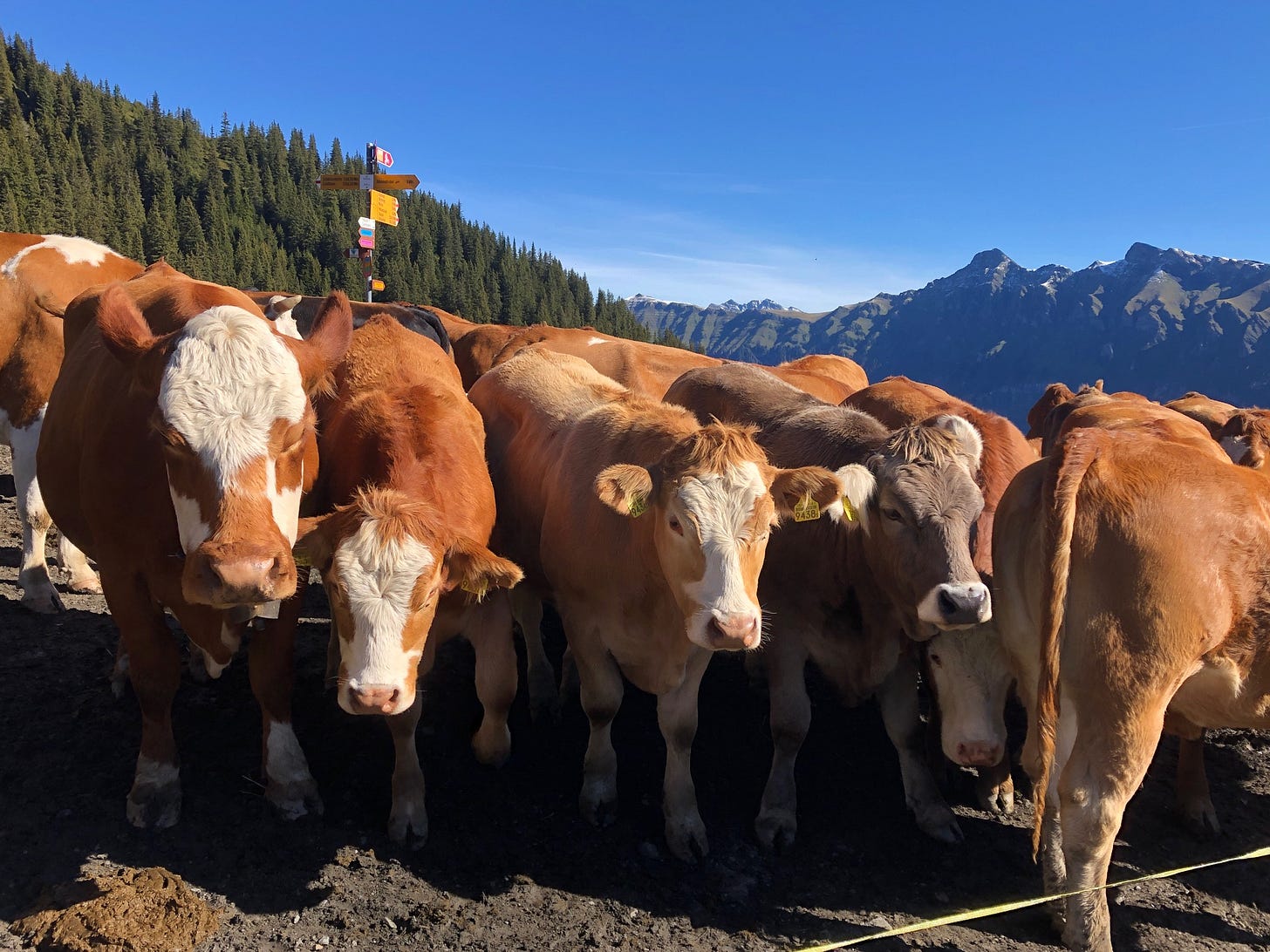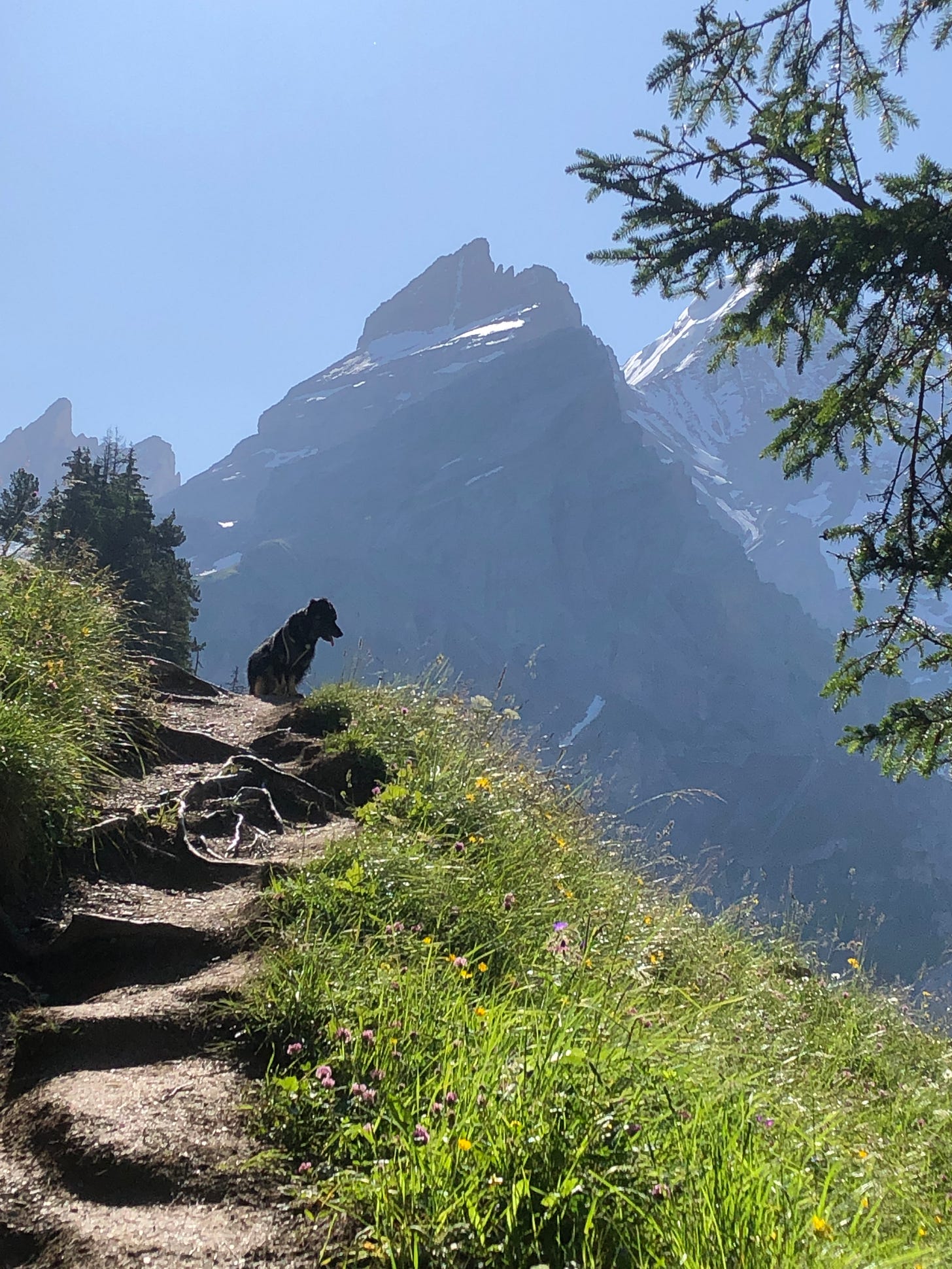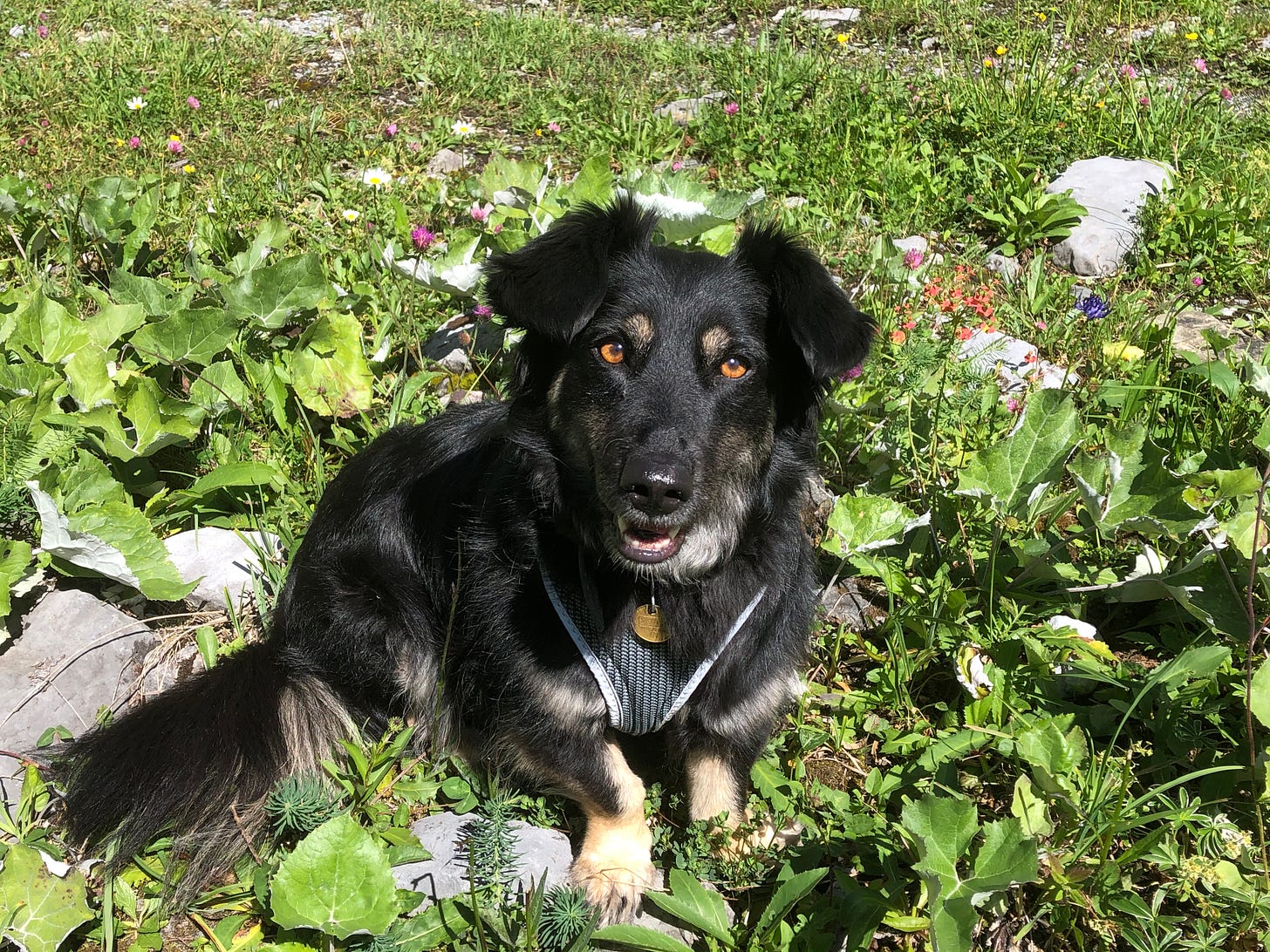I know what you all are thinking: “Why would anyone name a blog after a goofy German folksong?” For readers unfamiliar with the song, below is a terrific performance1 (complete with yodeling) that I promise will be worth your while:
Ah, this brings back memories. When I was seven years old, my friend Beth and I donned our dirndls, marched in time, and sang “The Happy Wanderer” as a duet for our school show. Ostensibly we were singing it in German, coached by Beth’s mom, but given that she taught us to pronounce mein like mean rather than mine, I think we honored the German more in the breach than in the observance.
But I digress. As you have probably guessed, I chose this title not to share the song but instead to invite you all to wander with me, through a wide range of topics that I hope will add to the happiness in our lives and maybe even in the world. And if this goal sounds too ambitious, I promise that every post will end with a little tidbit—a useful tip, interesting fact, recipe, joke, or fun link—to provide an immediate payoff.
Some German Vocabulary
A typical metaphor for life is that it’s a journey, but I prefer the metaphor of a Wanderung. The German word Wanderung is a falscher Freund,2 or a false friend: when you are learning a language, a false friend is a word in the new language that looks like a word in your own language, which causes you to think the word means something different than its actual definition.
To take a personal example, when I was starting to learn German, I had trouble following the plots of mysteries because I kept getting confused by the word Gift, which means poison. “Why is everyone so upset that he gave his brother a gift?” I wondered, until I thought to look the word up. Similarly, English speakers might think Wanderung means wandering—pottering around aimlessly—but in fact a Wanderung is a hike, a Wanderer is a hiker, and a Wanderweg is a hiking path.
Hikes vs. Journeys
A hike, unlike a journey, is short and lacks an overarching goal beyond appreciating the beauty of nature, discovering new places, and getting some exercise. You can get lost on a hike, but usually there are signposts and maps to guide you, so a hike is the perfect combination of planning and serendipity. You might encounter obstacles, and then you need to use your knowledge and creativity to surmount or circumvent them. And if the hike doesn’t work out for some reason,3 all is not lost; you can always try again another day.


I think we all agree that wandering through life, while fun for a while, is not the easiest route to happiness. On the other hand, I have always disliked the metaphor of life as a journey. If life is supposed to be a journey, what about those of us (most of us?) who have stepped off the path?
Maybe we peter out because we lack sufficient ability to continue (for example, I wanted to be a professional pianist until I got to college and realized that, while I was pretty good for a high school student, I was not in the same universe as the people who could make a career in music, and no amount of practicing would get me there). Maybe we discover that the path we had chosen at first isn’t the right one (for example, in my teens and early twenties, I wanted a high-powered career and couldn’t imagine ever having kids, but given that I stopped working a couple of decades ago when my son was born and haven’t returned to paid work since, I can safely say that my original path was wrong for me). Or maybe we encounter unexpected detours, and head off in a totally new direction (sometimes literally: Our family moved to Prague in 2014 and then to Switzerland, where we now live, in 2018).
So for me life is not a journey that leads inexorably and ultimately to a single, unified goal, but neither is it wandering desultorily from event to event. It’s the middle way—a Wanderung—a series of excursions that take us on intriguing adventures, where we learn from experience and where plans can go awry or succeed beyond our expectations.
What’s in Your Backpack?
You will not be surprised to hear that I view the things I take with me on a hike as a metaphor for life too. If you want to succeed on your hike, your backpack can’t be too heavy, so you have to choose carefully. On hikes and in life we need:
Something for emergencies. Like nearly everyone who enjoys the outdoors in Switzerland, I have helicopter-rescue insurance. I get a tremendous kick out of this!
Something for minor problems. These include bandaids for blisters, ibuprofen for aching muscles, a bit of cash, a jacket, and extra socks.
Items for safety, comfort, and enjoyment. I always take sunscreen, tissues, and a hat, and along with food and water, I like to include something yummy, like cheese and stir-fried tofu (recipe below). I also take treats for . . .
A trusty friend: Lynn! My dog, Lynn, comes with me on all my hikes, and in spite of her stubby legs, she is a terrific little hiker. Most of the time she dashes ahead of me on her own adventure and looks back as if to say, Why are you so poky?
But when I’m struggling up a steep spot on all fours, hauling myself up by grasping clumps of grass or jutting rock, or sliding down a slippery slope on my butt, Lynn is right there next to me, to offer her support and encouragement, just as true friends should do.
And, of course, a towel. Douglas Adams, in The Hitchhiker’s Guide to the Galaxy, called it “the most massively useful thing an interstellar hitchhiker can have.” Towels are particularly useful for hikers whose dogs get muddy tummies.
Readers, what’s in your backpack? What do you need for emergencies, sustenance, enjoyment, and companionship in your hikes through life?
The tidbit
No one ever believes me until they try this snack for themselves, but cold stir-fried tofu is delicious on a hike. It’s packed with protein, and you can munch on the cubes as you go. If you are a tofu-skeptic, just pretend it’s pieces of chicken (yes, everything, including tofu, tastes like chicken). Here’s how to make it:
Cut a slab of firm tofu into slices that are about 1cm thick, wrap each slice in paper towels, and press the liquid out as much as possible.
While the tofu is draining, finely mince 1 clove garlic and a 1-inch peeled knob of ginger. Then, cut the tofu into 1-2cm cubes.
Heat about 1/4c of neutral oil in a nonstick frying pan over medium-high heat. When the oil is hot enough to make a drop of water spritz, lay the tofu in the oil.
Go check social media or your email just long enough to have forgotten about the tofu. (This way it will get really crispy.) Race back into the kitchen and flip the tofu pieces to the other side. Cook a couple of minutes more.
Stir in the chopped garlic, ginger, and red pepper flakes to taste. Douse the whole thing with soy sauce and squeeze some lime over everything. Toss thoroughly.
Drain on paper towels. When cool, refrigerate.
h/t My friend Susan—thanks!
Paradoxically, the term falscher Freund is in fact itself not a false friend; falscher looks like its meaning, false, as Freund does for friend.
This is probably also the place to note that I yield to no one except possibly David Foster Wallace in my love of footnotes, so readers should be advised.
Here’s an embarrassing personal example: I once set out to summit a cute little mountain (to give you an idea of the extent to which the Swiss regard this mountain as lame and unthreatening, its name translates as Rabbit Meadow). But it was much too early in the season, and I was thwarted by some extremely slippery ice on an extremely steep slope. I decided that discretion was the better part of valor and turned back. I do intend to return one day to conquer Rabbit Meadow. Whoo hoo.






Some thoughts, some words, come at exactly the right time. Thank you Mari!!!
In my backpack? Friends. That's it. Friends.
Congratulations, Mari, on your first episode of The Happy Wanderer. It’s grea, and we can’t wait for the next one!